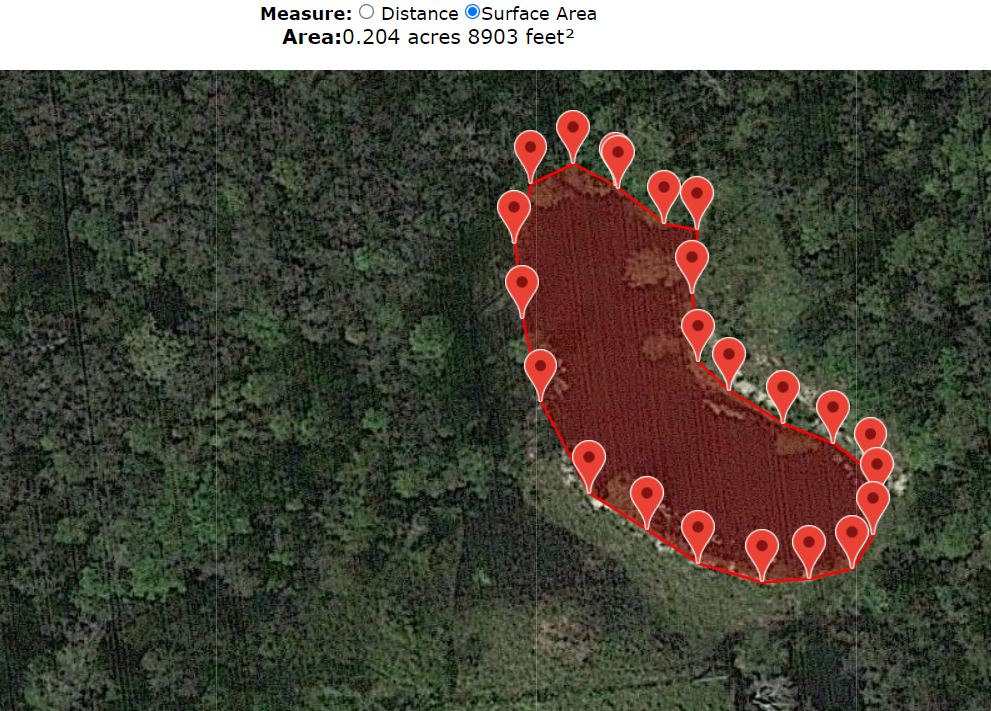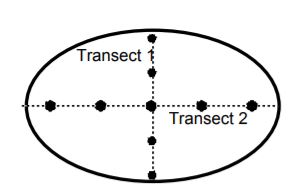
Determining the Volume of Your Pond
Ponds are an important part of our lives. They add valuable water and ascetics to our properties, are home to multiple species of wildlife, not to mentions, for many of us provide our favorite pastime- FISHING! In the Florida Panhandle, many people are lucky enough to own their own fishpond. However, in many cases people do not have any idea of how big their pond is!
Knowing the size of a pond is critical for just about every pond management decision. To determine the volume of water in your pond the first step is to determine the acreage or surface area of your pond. Fortunately, there are some great online tools to help determine the acreage and surface area of a pond. One simple tool can be found at: fishhttps://findpondsize.com/nonmobile.php
This website allows you to locate your pond using your address and then determine the surface area in square feet and acres in just a few clicks. Image 1 shows an example of a pond that was measured using this tool.
If you do not have an electronic device to measure the depth of your pond, don’t worry! Measuring the depth can easily be done by boat and using a weighted line. Take measurements in two transects across your pond. For ponds less than two acres, take measurements at 5 points on each transect. You will then use this information to calculate the average depth.
Once you have the total surface area and the average depth you can easily calculate the total gallons and volume of your pond. If math is not your strength, there are several websites online that will do it for you. Here is one of several options: https://www.lakeandpondsolutions.com/helpful-info/acerage-volume-calculations/
Knowing the correct size and surface area of your pond will allow you make informed decisions that will increase your ability to manage everything from weed control to stocking rate. From weed control, pH balance, herbicide application, determining what size aerator to purchase or how many fish to stock, the first step is to determine the volume of water your pond contains.





